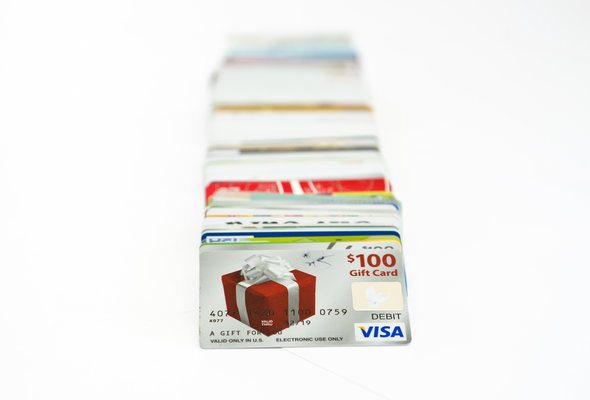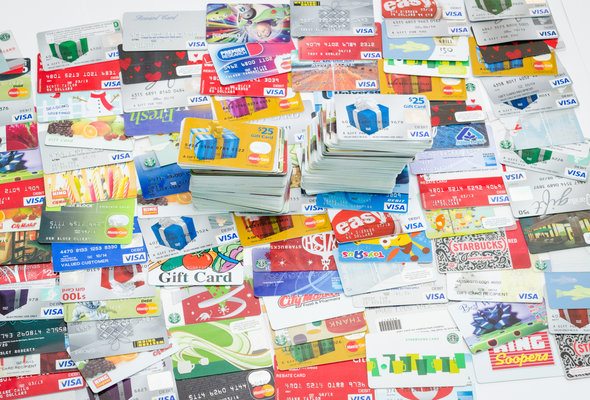Most of us have seen those Visa, MasterCard, or American Express gift cards in the checkout line at the gas station. They’re everywhere, and they’re popular because they’re like a gift card for cash. The preloaded funds get deducted with each transaction until the card runs out or gets refilled. This makes them seem as convenient as debit and credit cards, but there are some important distinctions you should know.
A financial advisor can help you create a financial plan to account for your credit situation.
How Do Prepaid Debit Cards Work?
To use a prepaid debit card, the first thing you need to do is fund the account. It’s not all that different from how the balance works in your checking account. For example, if you purchase a $100 prepaid Visa card from a store, the account associated with the card will have $100 in it. As you make purchases with the card, you draw from these funds. The funds draw down to zero, which means if you have $25 left on the card and make a $30 purchase the $25 will still go through. This will leave you with a $5 balance to pay instead of a cancelled transaction like you may see with overdraft fee protection on a debit card.
Prepaid debit cards can usually be refilled through an account on the card issuer’s website.Simply link the card to a credit or debit card and purchase the funds you need. If you prefer to use cash, you’ll need to buy a new prepaid debit card each time.
Watch out for sneaky fees, too.Many prepaid cards charge fees for ATM withdrawals, reloading, and even PIN transactions. Be sure you are aware of all of your card’s fees before you use it, or you may end up losing a lot of your funds to them!
Where Can You Get Prepaid Debit Cards?
Retail stores like Target, Walmart, and Walgreens often sell prepaid debit cards in the same section as gift cards. This makes it easy to pick up a prepaid card as a gift or for yourself. The card will be activated at the cash register and you’ll have to fund the card then, alongside the rest of your purchases.
You can also get prepaid debit cards from any bank and pay for them right at the branch, or purchase a card from any card network’s website. These options allow you to add any amount of money onto the card, as opposed to cards available at retail, which typically require set amounts (e.g. $50 or $100).
Where Can You Use Prepaid Debit Cards?
Prepaid debit cards are sponsored by card networks and can be used anywhere that card network is accepted. That means, if you have a Visa prepaid gift card, you can use the card anywhere that accepts Visa credit cards. You can use prepaid cards in stores or online for any purchase where you could otherwise use a credit card.
Some prepaid cards also allow access to national ATM networks, like Allpoint, or a bank ATM if the card is issued by a bank, such as Citi. This can be useful if you need to make a cash purchase and want to withdraw money without paying fees.
Difference Between Prepaid Debit Cards and Credit Cards
Even though prepaid debit cards have card network logos, like Visa or MasterCard, on them, they are not credit cards. Credit cards operate based on borrowing money and repaying it. Prepaid debit cards are, like the name states, prepaid and draw from a funded account. Since you are using set funds rather than borrowing against credit, you don’t have to worry about late fees, interest, or managing debt.
Prepaid debit cards do not affect your credit in any way, since they are funded and then use as payment. If you are looking to build credit or increase your credit score, a prepaid debit card is not the way to go. Instead, look into a credit card with a low APR and work to pay off your bills every month, on time.
Pros and Cons of Prepaid Debit Cards

Prepaid debit cards can be a helpful financial tool, but they’re not the right fit for everyone. Like any product, they come with their own advantages and drawbacks. When deciding whether a prepaid debit card suits your budget needs or if another payment method might serve you better, it helps to weigh the pros and cons.
Here’s a quick comparison:
| Pros | Cons |
| No credit check required – Ideal for those with poor or no credit. | Hidden fees – Some cards charge for activation, ATM use, reloading, or inactivity. |
| Easy budgeting – Spend only what’s loaded on the card. Great for sticking to a budget. | No credit-building potential – Using a prepaid card won’t help you build or improve your credit score. |
| Safe for online purchases – Helps protect your main bank account when shopping online. | Limited fraud protection – Prepaid cards may offer weaker protections compared to credit cards if lost or stolen. |
| Parental control – Parents can preload cards for teens and monitor their spending. | May lack features – Some cards don’t offer mobile apps, ATM access, or direct deposit options. |
Prepaid debit cards are particularly useful for people who don’t qualify for a traditional bank account, prefer to avoid credit, or want to manage spending more closely. They can also serve as a safer alternative to cash for online shopping or travel.
However, it’s important to read the fine print. Many prepaid cards come with layered fees that can quietly drain your balance if you’re not careful. And because they don’t report to credit bureaus, they won’t help you build a credit history.
If your goal is to gain financial control without taking on debt, a prepaid card can be a practical tool, just be sure to shop around and compare options before choosing one.
Who Should Use a Prepaid Debit Card?
Prepaid debit cards are a great option for individuals with bad credit who can’t get a credit card or anyone who can’t get a debit card for their bank account. Even though they won’t help you to rebuild your credit, you will still be able to pay with plastic – a necessity for internet or over-the-phone purchases.
These cards are also a great option for children and teens who are learning about money and spending. Parents can load their children’s allowance, birthday money or other funds onto the card. It can also be good for college students, since parents can load money onto the card online, should their kids need money in an emergency.
Prepaid cards can also work well for budgeting. Divide your budgeted money onto different prepaid cards for each category of your budget. This way, you are sure not to overspend in any one area, since the card will only have your allotted funds on it.
Bottom Line

Prepaid debit cards offer a convenient and flexible way to manage money without the need for a traditional bank account or credit approval. They can be a smart tool for budgeting, teaching kids about financial responsibility, or simply making secure purchases online. However, it’s important to weigh the potential drawbacks, like hidden fees and limited fraud protection, before choosing one.
Tips to Build and Maintain Credit
- A financial advisor can help you create a financial plan based on your credit situation. Finding a financial advisor doesn’t have to be hard. SmartAsset’s free tool matches you with up to three vetted financial advisors who serve your area, and you can interview your advisor matches at no cost to decide which one is right for you. If you’re ready to find an advisor who can help you achieve your financial goals, get started now.
- Let’s say you’re building up your credit score after it took a hit from some unpaid bills. Prepaid debit cards won’t help increase your score, but a secured credit card might. This type of card is backed by your bank account, meaning you have a limited amount of purchasing power. Responsible usage (paying the balance each billing cycle) will help your credit score increase.
- You can always treat your credit cards (and prepaid debit cards!) as a version of the envelope cash budget. Instead of an envelope dedicated to each spending category (food, entertainment, gas, etc) with a set amount of cash, you can use a reward credit card for all your grocery purchases and gas (i.e. necessities) and use a prepaid debit card for categories where you’re prone to overspend, like dining out or shopping.
Photo credit: © iStock/millionsjoker, © iStock/PeterPhoto, © iStock/PeterPhoto
